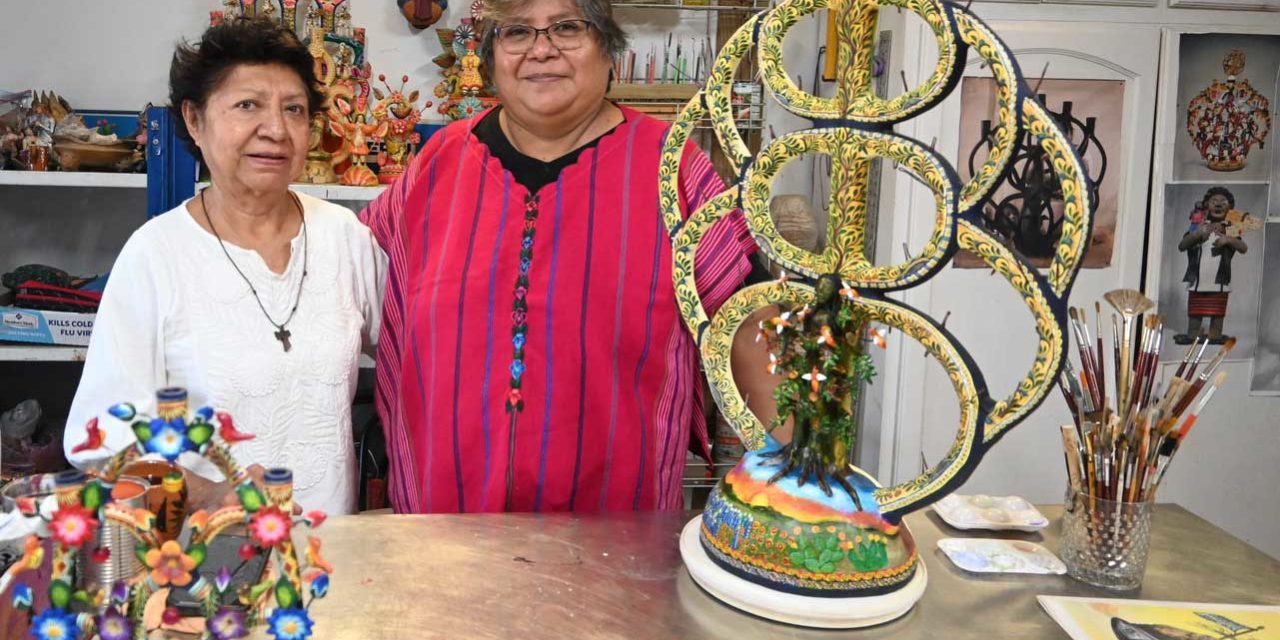Veronica Castillo, a fourth-generation clay artist, grew up in Izúcar de Matamoros in Puebla, Mexico. She acknowledges having been an artist all of her life–indeed at least working with clay since the age of five when she began helping her parents, both master clay artisans, in their work. At sixteen she was already assisting her family in completing complex Trees of Life.
Verónica Castillo’s parents, Alonso and Soledad Marta Hernández Castillo determined early in their marriage to teach all their children to work with clay. The Castillo siblings learned from among the best in Mexico. Her father Don Alonso was known as a “Maestro de Maestros,” a master among the master craftsmen.
Although the Castillo family’s fame centered on their creations of “Arbol de la Vida,” Tree of Life sculptures, Veronica ventured into different topics and spaces. She also ventured into working with the black clay of the Oaxaca region. She favored feminist themes such as a “tree of life” dedicated to women mariachis and singers.
Castillo is a gifted artist and an excellent communicator; thus it did not take her long to make good friends with fellow artists and scholars in San Antonio, notably UTSA professor Josie Méndez Negrete and Norma Cantú of Trinity University. Thanks to the diligence of Professor Norma E. Cantú, who nominated Castillo for the National Endowment of the Arts Heritage Fellow, Castillo won the prestigious NEA award in 2013. A NEA newsletter noted that traditionally the Tree of Life clay sculptures depict religious scenes, but “Castillo also uses her work to address social and contemporary issues such as violence against women and violence on the border.”
Castillo has reserved a special place in her studio for the artistic works of her family–all true masters of clay sculptures. The Castillo family has exhibited extensively throughout Mexico and abroad. Veronica Castillo’s bio noted that the family’s works of art are part of valuable collections in the United States, Munich, and London and have been shown in museums in Chicano, Brazil, and the Spanish Royal Palace of King Juan Carlos I.








